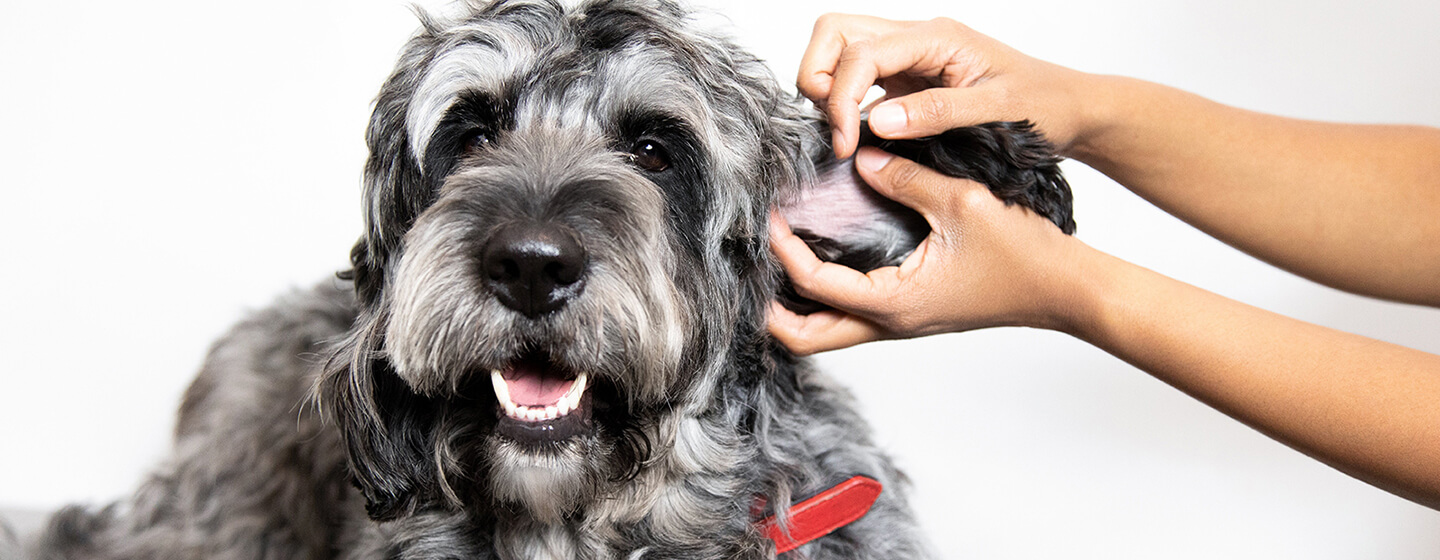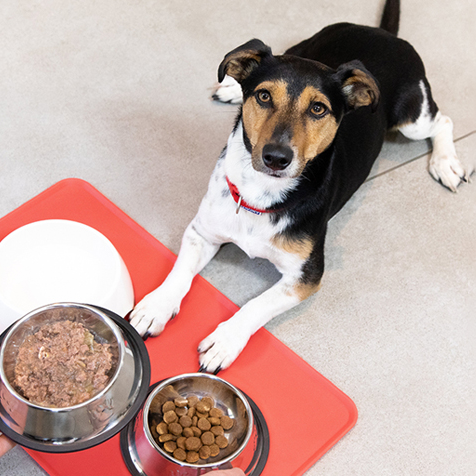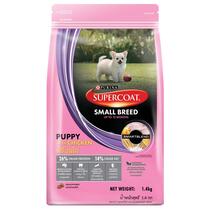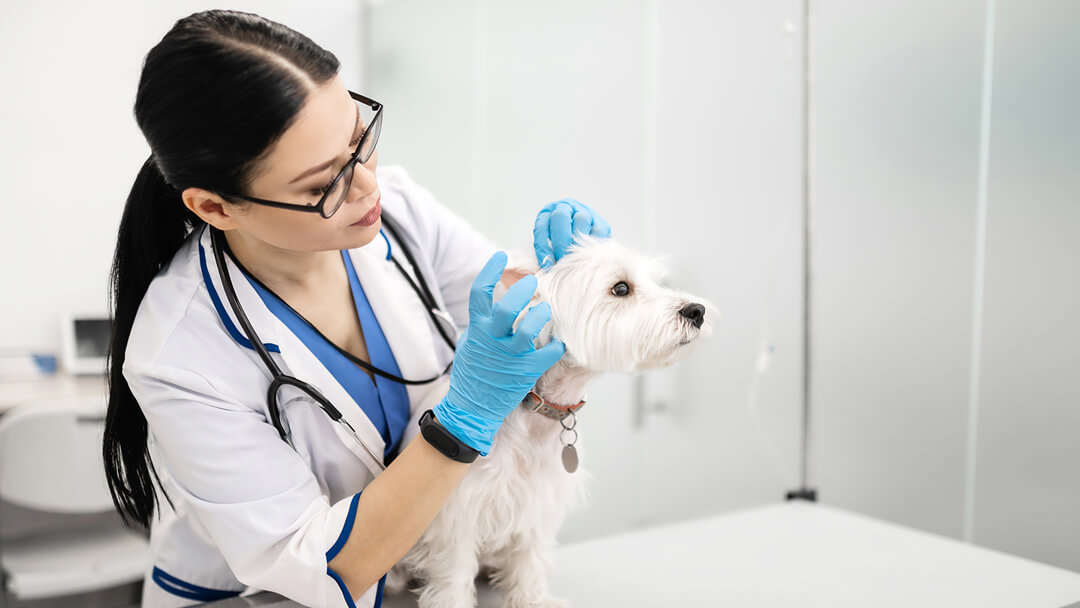
Many owners are concerned about mites in dogs, how they can be prevented, and how affected dogs can be treated. We’ve put together a guide on dog mites to help you out.
What are dog mites?
Mites are tiny creatures, usually under a millimetre long, that burrow into your dog’s skin and cause irritation and inflammation. Mites are a fairly common health concern for dogs. They are parasites that can cause a range of skin conditions, from dry skin to hair loss. Mites live in the fur, or sometimes in the ears, and can make life uncomfortable for your dog. Mites are also what cause ‘mange’, a well-known skin condition in dogs.
What health conditions do dog mites cause?
If your pet is infested with dog mites, it is known as a condition called mange. The common types are “sarcoptic mange” and “demodectic mange”. Other conditions caused by mites include cheyletiellosis, and trombiculosis, also known as “harvest mite” infestation. Ear mites live in the ear canals of dogs and can cause severe discomfort, so spotting and treating ear mites is extremely important.
How do I tell if my dog has mites?
Sarcoptic mange is a very itchy and unpleasant dog skin condition that can also affect humans. Affected dogs can cause damage to their skin and coat with constant scratching, leaving redness and sometimes scabs.
Demodectic mange is a serious skin complaint that causes hair loss, reddening, sore areas, scaling, crusting, lesions and the darkening of chronically affected skin. It usually affects younger dogs and can be very serious if left untreated.
Dog mite symptoms
If you notice the following symptoms in your dog, they may have mites:
- Hair loss (either in patches, or all over their coat).
- Dandruff.
- Excessive scratching.
- Visible irritation, such as red skin.
- You may even be able to see mites on their skin – part the fur and look closely.
Diagnosing mites in dogs
You might be able to tell if your dog has mites by carefully studying their skin. If they’re scratching, biting, or chewing themselves excessively you might suspect they have mites, and take a closer look.
Your vet, however, is the best person to diagnose mites in your dog. They will be able to tell what kind of mites your dog has, and how they should be treated.
Your vet will usually diagnose mites by studying a piece of skin or hair under the microscope – an entirely safe procedure. This will help them identify the type of mite affecting your dog.
How to treat dogs with mites
The good news is, most mite infestations can be treated with a simple anti-parasitic wash. Anti-parasitic shampoos can help cure your dog of many kinds of mite. You can buy them from many pet shops, although it’s best to ask your vet first to make sure you’re using the correct shampoo.
Your vet may instead provide you with medicine or a spot-on to help get rid of the infestation. Sometimes more than one treatment will be used at a time, and they may have to be administered for a while. The only thing you can do it be patient and persevere – and soon your dog will be mite-free!
How do dogs get mites?
Dogs can pick up mites from a number of places. They are usually passed from dog to dog, but they can come from their environment too.
Your dog may catch mites if they come into contact with another dog who has them, such as in an animal shelter or grooming establishment. Most dogs will be checked before they use these services, but accidents do happen. Your dog may also pick them up from another dog when you’re out and about on a walk.
Dog mites may also continue to live in the environment, such as in their bed or in the carpet, after they or another dog have been contaminated. Your dog can then pick them up again, which is why you should make sure everything is clean and mite-free after a known infestation.
How to prevent dog mites
The best way to prevent dog mites is to ensure they don’t come into contact with a dog who has them. This can be tricky, as you won’t always know, but keep an eye out if they come into contact with an unfamiliar dog.
If you dog has been treated for mites, wash their bedding and check that their surrounding environment has been cleaned, as this can help prevent re-infestation. And, of course, if your dog has mites make sure they don’t pass them on – usually by keeping them away from other dogs until they’ve been treated.
If you'd like to know more about preventing and treating skin conditions in dogs, check out our easy guide to dog skin problems. Or find out more about treating ticks, fleas and other parasites on dogs.










